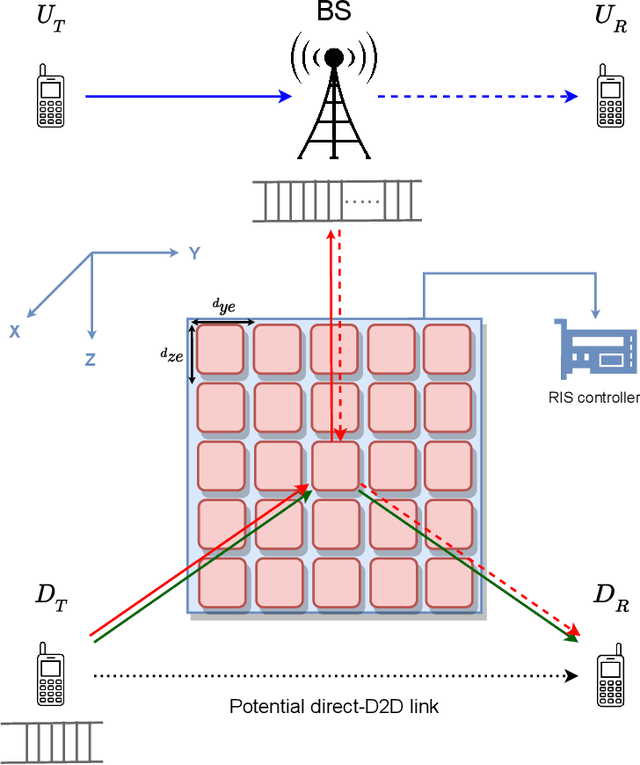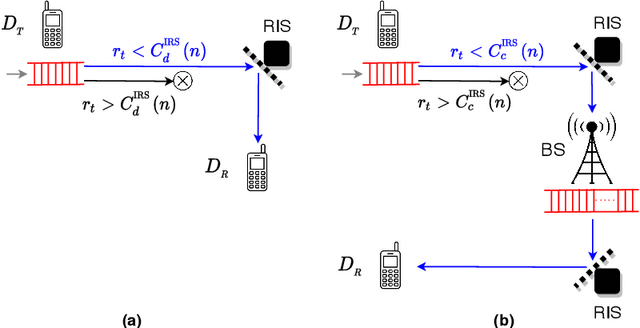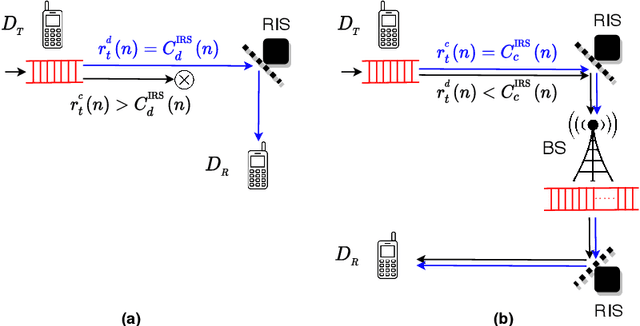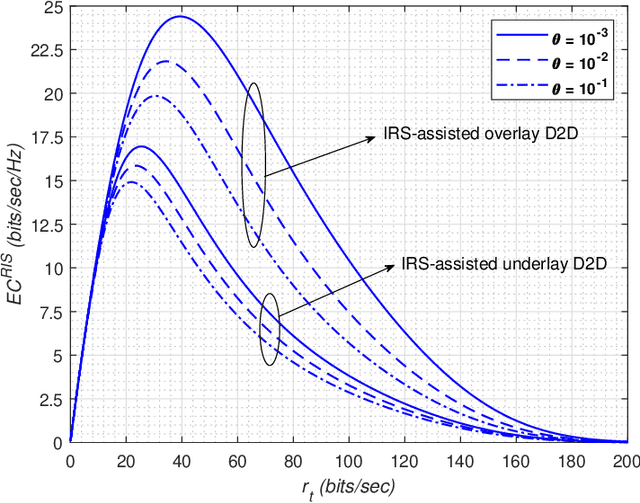Statistical QoS Analysis of Reconfigurable Intelligent Surface-assisted D2D Communication
Paper and Code
Apr 07, 2022



This work performs the statistical QoS analysis of a Rician block-fading reconfigurable intelligent surface (RIS)-assisted D2D link in which the transmit node operates under delay QoS constraints. First, we perform mode selection for the D2D link, in which the D2D pair can either communicate directly by relaying data from RISs or through a base station (BS). Next, we provide closed-form expressions for the effective capacity (EC) of the RIS-assisted D2D link. When channel state information at the transmitter (CSIT) is available, the transmit D2D node communicates with the variable rate $r_t(n)$ (adjustable according to the channel conditions); otherwise, it uses a fixed rate $r_t$. It allows us to model the RIS-assisted D2D link as a Markov system in both cases. We also extend our analysis to overlay and underlay D2D settings. To improve the throughput of the RIS-assisted D2D link when CSIT is unknown, we use the HARQ retransmission scheme and provide the EC analysis of the HARQ-enabled RIS-assisted D2D link. Finally, simulation results demonstrate that: i) the EC increases with an increase in RIS elements, ii) the EC decreases when strict QoS constraints are imposed at the transmit node, iii) the EC decreases with an increase in the variance of the path loss estimation error, iv) the EC increases with an increase in the probability of ON states, v) EC increases by using HARQ when CSIT is unknown, and it can reach up to $5\times$ the usual EC (with no HARQ and without CSIT) by using the optimal number of retransmissions.
 Add to Chrome
Add to Chrome Add to Firefox
Add to Firefox Add to Edge
Add to Edge